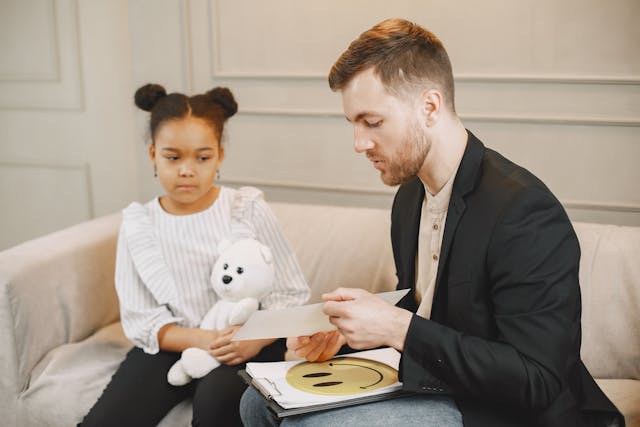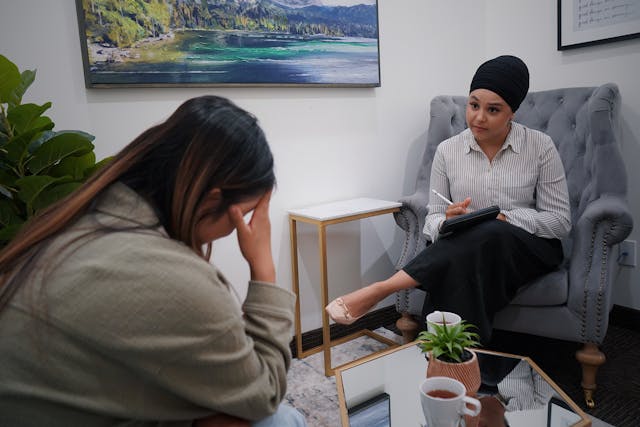What is learned helplessness?
Learned helplessness is a psychological condition in which individuals come to believe they have no control over their circumstances, even when opportunities for change exist. This mindset often develops after repeated exposure to stressful or traumatic events, where attempts to improve the person or situation are met with failure. Over time, people internalize the belief that their actions are futile, leading to a sense of powerlessness that can permeate many aspects of their lives (Leonard, 2019).
This condition is particularly problematic because it doesn’t just affect one’s ability to cope with other life challenges — it can also lead to serious mental health issues like depression, anxiety, and depressive symptoms. In some cases, individuals may experience sub-clinical depression, where feelings of sadness and hopelessness are present but do not meet the full criteria for a clinical diagnosis. In addition, people who experience learned helplessness may withdraw from social interactions, avoid new experiences, and generally lack motivation.
For therapy clients, learned helplessness presents a significant barrier to progress. It can undermine their confidence in therapy and their ability to engage with therapeutic interventions. As healthcare professionals, understanding the roots and manifestations of learned helplessness is crucial for developing effective strategies to help clients finally break free from this debilitating mindset.
What is learned hopefulness in positive psychology?
In contrast to learned helplessness, learned hopefulness is how individuals develop a mindset of optimism and belief in their ability to influence outcomes. This positive perspective is often shaped by past experiences of success, support from others, and exposure to environments where effort leads to tangible rewards. When people believe that their actions can make a difference, they are more likely to take proactive steps toward their goals and face challenges with resilience (Houston, 2019).
Research suggests that high-hope people tend to set challenging yet achievable goals, which foster autonomy, motivation, and engagement (Leung et al., 2009). However, it’s essential to recognize that, while generally beneficial, hope can sometimes become unrealistic or even detrimental. When hope is based on unattainable goals or a denial of reality, it can lead to disappointment, frustration, and even further mental health issues. Hence, maintaining a balance between hope and realistic expectations is key for therapy clients.
Furthermore, cultivating hopefulness and happiness can significantly enhance an individual's well-being, improving mental and physical health. Thus, therapists must help clients cultivate a hopeful mindset grounded in achievable outcomes and self-compassion. However, therapists must also differentiate hope from wishful thinking, lacking the same intentionality and action level. By guiding clients to focus on realistic and actionable goals, therapists can ensure their hope is meaningful and sustainable.
So, is learned hopefulness suitable for therapy clients? Absolutely — when nurtured correctly. A healthy sense of positivity and hope can motivate clients to engage more fully in therapy, set meaningful goals, and work toward positive change. Ultimately, the goal is to guide clients in developing realistic and sustainable hope, ensuring it becomes a constructive force in their healing journey.
How to help clients become hopeful to overcome depression
Fostering hope in therapy goes beyond promoting positive thinking; it’s about helping clients develop a realistic and empowering outlook by managing negative thoughts and shifting perspectives. Therapists can guide clients toward learned hopefulness by providing tools and strategies to cultivate a balanced sense of optimism, addressing the negativity bias that often skews focus toward adverse outcomes.
Here are some key approaches to consider:
Setting achievable goals
One of the most effective ways to instill hope in clients is by helping them set small, achievable goals. When clients experience success, even in minor ways, it reinforces the belief that they have control over their lives. Start by breaking down larger objectives into manageable steps and celebrate each milestone you achieve along the way. This approach builds confidence and provides clients with tangible evidence that their efforts can lead to positive outcomes.
Additionally, it aligns with strengths-based practices grounded in positive psychology, which emphasize leveraging personal strengths to foster resilience and motivation.
Encouraging self-compassion
Hopefulness thrives when clients learn to treat themselves with kindness and understanding, especially during setbacks. In the modern world, where individuals often face significant stress and pressure, self-compassion becomes crucial for maintaining hope and resilience. You must encourage clients to practice self-compassion by recognizing their efforts, acknowledging their progress, and reframing negative feelings and self-talk into positive emotions.
By fostering awareness and compassionate inner dialogue, clients are more likely to maintain hope even when faced with challenges, as they can view obstacles as opportunities for growth rather than failures.
Reinforcing positive relationships through the hope circuit
Supportive relationships are a vital component of learned hopefulness. Help clients identify and strengthen connections with people who encourage and uplift them. Whether it’s family, friends, or support groups, having a network of positive relationships can significantly boost a client’s sense of positivity and hope. Therapists can also model supportive interactions during sessions, demonstrating how constructive feedback and empathy reinforce a hopeful mindset.
These supportive interactions activate the hope circuit, reinforcing a positive and hopeful mindset.
Main takeaways
Cultivating hope in therapy is a powerful way to help clients break free from the constraints of learned helplessness, use positivity to overcome depression itself, and move toward a more empowered and positive outlook on life. By setting achievable goals, encouraging self-compassion, and reinforcing positive relationships, therapists can guide clients in developing a healthy sense of hope that motivates and sustains their progress.
Learned hopefulness is a valuable tool in therapy, but it must be nurtured with care. When balanced with realistic expectations and grounded in self-compassion, hope can become a driving force that propels clients toward meaningful change. As healthcare professionals, your role in fostering this mindset can make a significant difference in your clients' healing journeys, helping them build resilience and confidence as they work toward their goals.
References
Houston, E. (2019, August 27). What is hope in psychology + 7 exercises & worksheets. Positive Psychology. https://positivepsychology.com/hope-therapy/
Leonard, J. (2019, May 31). Learned helplessness: Examples, symptoms, and treatment. Medical News Today. https://www.medicalnewstoday.com/articles/325355
Leung, K. K., Silvius, J. L., Pimlott, N., Dalziel, W., & Drummond, N. (2009). Why health expectations and hopes are different: The development of a conceptual model. Health Expectations, 12(4), 347–360. https://doi.org/10.1111/j.1369-7625.2009.00570.x







.jpg)



.jpg)




.jpg)
.jpg)

.jpg)

.jpg)


.jpg)


